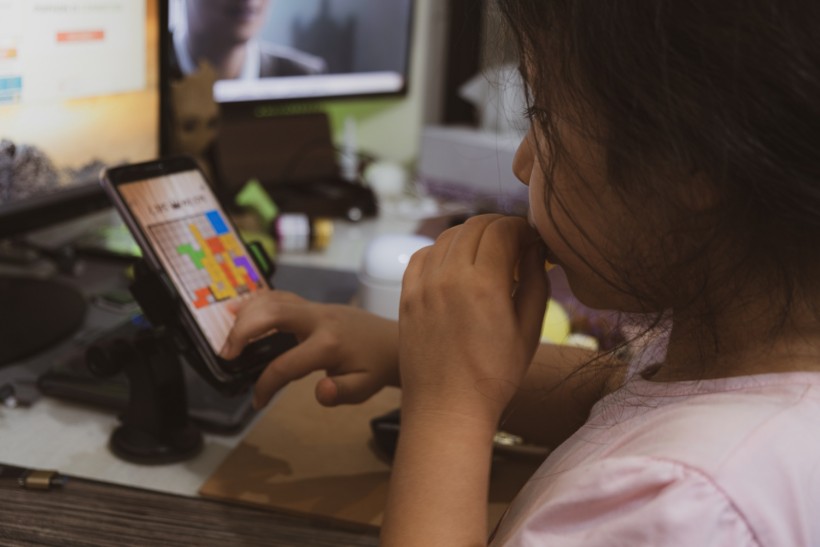It is not unusual for parents to have their children meltdown while cooking dinner, running an errand, or busy. Sometimes, the easiest way to handle a fussy preschooler is by giving them gadgets. However, experts say that this calming strategy could be later linked to worse behavior challenges.
In the study, titled "Longitudinal Associations Between Use of Mobile Devices for Calming and Emotional Reactivity and Executive Functioning in Children Aged 3 to 5 Years", published in JAMA Network, Michigan Medicine researchers reported that using gadgets to calm upset children ages 3 to 5 is linked to emotional dysregulation.

Frequent Use of Gadgets to Calm Young Children Linked to increased Emotion Dysregulation, Study Suggests
Effects of Increased Use of Gadgets on Children Ages 3-5
Researchers investigated how gadgets, like smartphones and tablets, were used as calming mechanisms and their link to greater emotional reactivity or dysregulation over the course of several months, Science Alert reported.
The study included 422 parents and the same number of children observed from August 2018 to January 2020, before the COVID-19 pandemic lockdowns were implemented.
They found that increased use of devices to calm upset children is linked to rapid shifts in mood and heightened impulsivity. The link was strong in young boys and children who display hyperactivity, impulsiveness, and strong temperament.
Study lead author Dr. Jenny Radesky, a developmental-behavioral pediatrician at the University of Michigan health C.S. Mott Children's Hospital, explained in a press release that devices might displace opportunities for developing independent and alternative methods that will teach children self-regulation.
Children ages 3 to 5 are particularly prone to tantrums, intense emotions, and fighting back, which chooses of giving them gadgets to calm down a more appealing approach. But experts said that the short-term relief might lead to long-term problems, especially in their emotional development, since it could shut out other coping methods.
The team emphasizes that device use in moderation can be useful but warns against using it as a primary or frequent way of calming down children. It is not a new topic, as parents have been concerned about giving too much television time or playing video games to their children.
Radesky noted that the short-term relief both parents and children get from the frequent use of gadgets could motivate both parties to maintain this cycle. The habit is strengthened over time as children's media demands strengthen, which gives children less practice in another coping mechanism.
READ ALSO: How Electronic Devices Affect Your Child's Mental Health
Alternative Calming Mechanisms to Help Build Emotion Regulation Skills
As a mother of two, Radesky has offered some calming mechanisms when parents are tempted to use gadgets to calm upset toddlers. According to Science Daily, here are Radesky's recommendations:
- Using sensory approaches- When kids start getting antsy, it is best to channel their energy to sensory approaches, such as hugging or pressure, jumping, squishing putty objects, listening to music, looking to a sparkle har, and others.
- Label emotions the child is feeling- When parents put a label on what their kid is experiencing, it is easier to help them calm down.
- Use color to associate different emotions- Young children have difficulty thinking about abstract and complicated concepts, such as their emotions. Color zones are easier for kids because a visual guide will help them understand their emotions.
- Teach kids a safer or more problem-solving replacement behavior- Kids sometimes show negative behaviors when upset, as this is their way of communicating emotions. Parents can include teaching them safer and more solution-focused behavior for them to communicate their feelings better.
Parents also have the power to set boundaries of applications and video services children can watch to maintain healthy usage of gadgets.
RELATED ARTICLE: Children Playing Dolls Instead Of Gadgets Develop Key Social Skills for Emotional Development, Study Says
Check out more news and information on Children's Health in Science Times.














